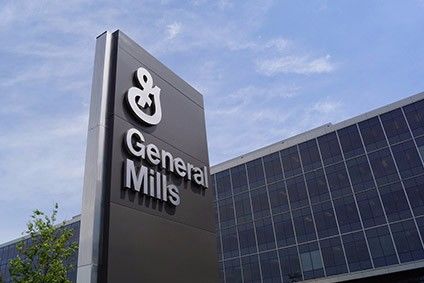
General Mills has pointed to double-digit input-cost inflation over the next six months in what the US food group described as a “volatile” environment.
Reporting first-half results to 27 November, the owner of the Blue Buffalo pet-food business and the Old El Paso Mexican food brand predicts a full-year inflation print of 14-15%, with cost pressures likely to remain beyond the double-digit, six-month window.
Supply-chain disruptions also continue to impact General Mills in a quantum above “historical averages” and are unlikely to return to pre-pandemic levels in the current financial year, chairman and CEO Jeff Harmening said in his prepared remarks following the results yesterday (20 December).
Customer-service levels have also still not fully recovered, hovering around the “high” 80% range in US retail, compared to a “normal” range of 98-99%.
“We’ve seen some modest improvement in the supply-chain environment in recent months, with logistics challenges continuing to ease and a slight reduction in the level of upstream supply disruptions. Despite these improvements, supply disruptions remain well above historical averages, and we aren’t forecasting a return to pre-pandemic levels of supply disruptions or customer service during this fiscal year,” Harmening said.
Despite price increases to retailers – and another planned in pet food in February – General Mills said “volume elasticities continued to remain below historical levels in the first half, particularly in North America retail”.
Harmening added: “We are watching these trends closely, but we do not expect a return to pre-pandemic elasticity levels during fiscal 2023.”
Nevertheless, he said during the Q&A session that it is “highly possible consumers will be under more pressure over the next six months”, driving more at-home eating rather than dining out. “Those are the factors that we see and drive our assumptions that there won’t be a significant change in elasticities over the next six months,” Harmening explained.
Pet food headwinds
In pet food, General Mills encountered a “headwind” in the second quarter as some retailers reduced inventories, resulting in “flat” sales growth, compared to high single-digits across all categories. Harmening put it down to retailers’ reluctance to tie-up working capital in stock, not being able to fully service demand and because they were catering to other products ahead of the festive period.
Still, General Mills is ramping up manufacturing investment in pet food, along with other areas where it sees prospects for “sustained growth” such as Mexican food, hot snacks, fruit snacks and cereal, Harmening said.
Pet-food growth is expected in the double-digit range in the third quarter, with the premium part of the category “fairly inelastic” as “pet parents really care about what they feed their pets”, he said.
General Mills raised its guidance yesterday for organic sales growth, operating profit and earnings per share.
Organic revenue is expected to increase 8-9%, compared to a prior estimate of 6-7% and the first-half print of 11% to reach US$9.9bn.
Adjusted operating profit is seen at 3-5% versus flat to up 3%. It climbed 15% in the half to $1.9bn. Adjusted EPS is envisaged at 4-6%, up from 2-5%. The metric rose 13% in the first six months to $2.21.
Harmening sought to give some insight into the inflationary landscape amid the prediction for double-digit input-cost pressures in the back half.
“It may decelerate from where it is now, but then decelerating to double-digits is not exactly zero,” he explained during the Q&A. “And even as we look across a longer horizon, I don’t want to play Nostradamus with inflation rates.”
General Mills’ chief added: “What I will say, though, is even looking out past six months, it’s pretty clear to us that we’ll still see an inflationary environment. It may or may not be as robust as it is now, but it will still be an inflationary environment, driven quite a bit by wage increases.
“It’s hard for us to see an environment where we don’t see inflation even if those inflationary levels may not be exactly what we’ve experienced over the last six months.”
